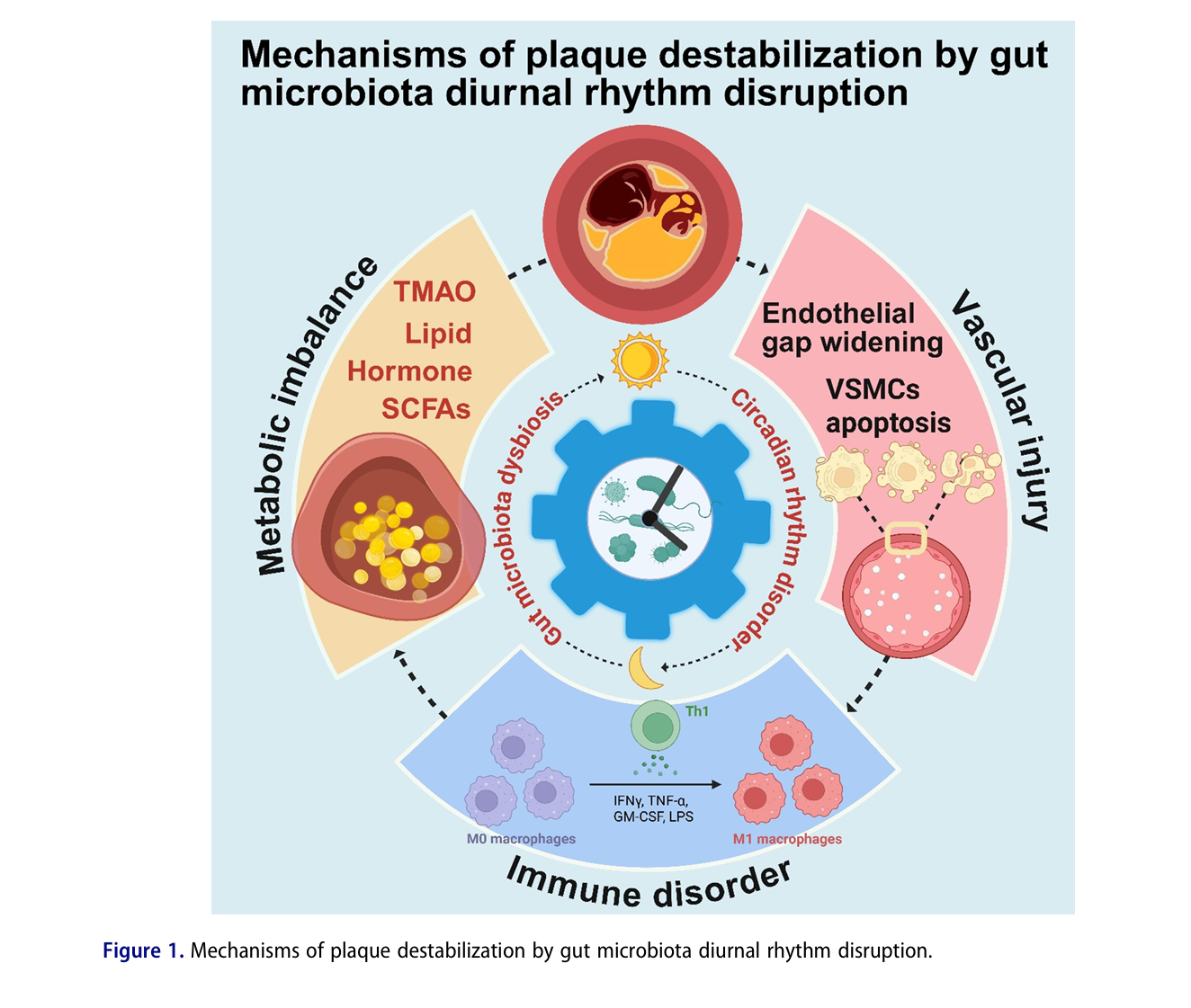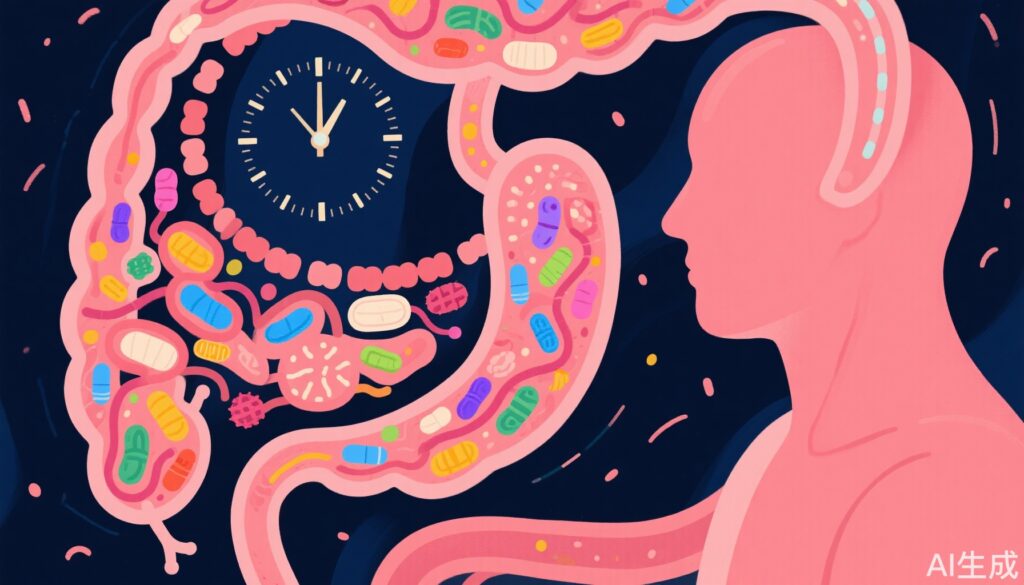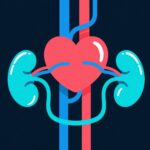Cardiovascular diseases (CVDs) remain a leading cause of mortality globally. Among these, acute events such as myocardial infarction and ischemic stroke are frequently linked to destabilization of atherosclerotic plaques. Recent research has unveiled a fascinating link between the gut microbiome’s circadian rhythms and plaque stability, shedding light on innovative prevention and treatment strategies.
The Role of Circadian Rhythms in Cardiovascular Health
Circadian rhythms, the natural cycles governing physiological processes over a 24-hour period, influence cardiovascular events. Clinical studies have long observed that acute cardiovascular incidents peak in the early morning. While traditionally attributed to endogenous factors like blood pressure fluctuations, new evidence implicates the gut microbiome as a “second biological clock.” Short-chain fatty acids (SCFAs) and trimethylamine N-oxide (TMAO) are among microbial metabolites showing rhythmic variations that impact endothelial function and immune responses. For instance, TMAO promotes plaque instability through endothelial apoptosis and platelet activation, whereas SCFAs enhance vascular integrity and immune regulation.

Disrupting the Gut-Host Symbiosis
Modern lifestyle factors such as irregular eating patterns and sleep disturbances disrupt the synchronized relationship between the host’s circadian clock and microbial rhythms. This dysregulation can lead to an imbalance in microbial metabolite production, which may accelerate endothelial dysfunction, immune dysregulation, and ultimately, plaque destabilization.
Proposed “Clock-Microbiome-Modulation” (CMM) Strategy
Researchers propose a novel “Clock-Microbiome-Modulation” (CMM) strategy as a preventative approach. This includes timed feeding protocols, probiotic supplementation during specific times for enhanced colonization, and circadian-targeted pharmacological agents. For example, prebiotics like inulin could promote beneficial bacterial growth, while agents like REV-ERBα agonists could synchronize host-microbial rhythms.
Looking Ahead
While the CMM strategy holds promise, its implementation faces challenges such as individual variability in circadian cycles and microbial composition. Future advancements in AI-driven personalized medicine and multi-omics integration could refine these approaches.
Conclusion
The interplay between gut microbiota and human circadian rhythms represents a frontier in cardiovascular disease management. By leveraging this connection, medical science moves closer to dynamic and personalized therapeutic paradigms that address the root causes of chronic conditions.
Reference
Zhai T, Zou X, Zhang Z, et al. Circadian rhythms of gut microbiota and plaque vulnerability: mechanisms and chrono-microbiota modulation interventions. Gut Microbes. 2025;17(1):2532703.



